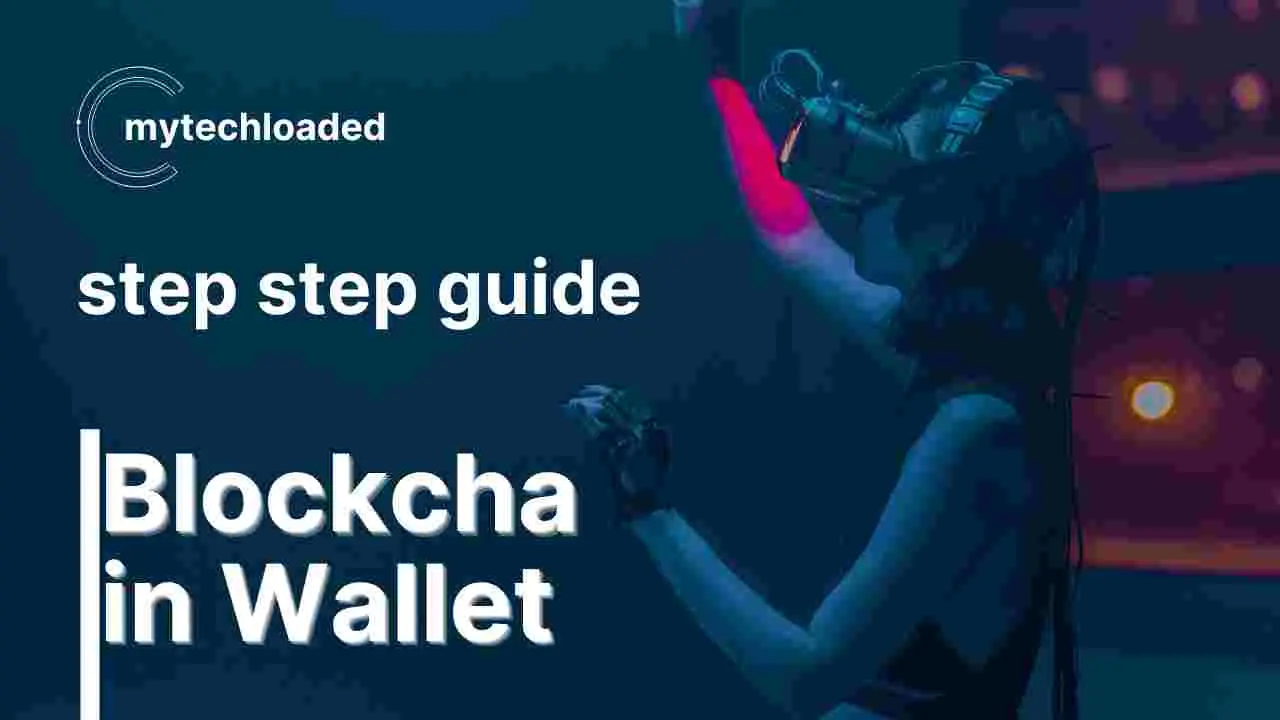Blockchain technology has revolutionized the way we conduct financial transactions and store data securely. As more people venture into the world of cryptocurrencies and blockchain-based applications, understanding how to retrieve a Transaction ID (TXID) from a blockchain wallet becomes essential. A Transaction ID is a unique identifier assigned to each transaction on a blockchain, acting as a digital fingerprint to track and verify the transfer of funds. In this blog, we will provide a comprehensive step-by-step guide on how to obtain a Transaction ID from a blockchain wallet, catering to both beginners and seasoned users.
Table content
| What is a Transaction ID? |
| Choosing the Right Blockchain Wallet |
| Steps to Obtain a Transaction ID: a. Sending Cryptocurrency b. Receiving Cryptocurrency c. Tracking External Transactions |
| Common Issues and Troubleshooting |
| Conclusion |
| What is a Transaction ID? |
A Transaction ID, often referred to as a TXID, is a unique alphanumeric string that serves as a record of a specific transaction on a blockchain. It acts as a proof of the transaction’s existence and is crucial for tracking the movement of funds. Whether you are sending or receiving cryptocurrencies, or engaging in other blockchain-based activities, having access to the Transaction ID is essential for verifying the status and success of the transaction.
Choosing the Right Blockchain Wallet
Before we delve into obtaining a Transaction ID, it is crucial to select the right blockchain wallet. There are numerous options available, including hardware wallets, software wallets, mobile wallets, and web-based wallets. Each type of wallet has its unique features, security measures, and user interfaces. When choosing a wallet, consider factors such as security, ease of use, compatibility with your preferred blockchain network, and customer reviews.
- Steps to Obtain a Transaction ID
a. Sending Cryptocurrency
Step 1: Log into Your Blockchain Wallet Access your selected blockchain wallet using your credentials, such as a username and password or a private key.
Step 2: Initiate the Transaction Locate the “Send” or “Transfer” button within your wallet interface. Click on it to initiate the process of sending cryptocurrency to another address.
Step 3: Enter Recipient Address and Amount Provide the recipient’s blockchain address and the amount of cryptocurrency you wish to send. Double-check the address to avoid any errors, as cryptocurrency transactions are irreversible.
Step 4: Confirm Transaction Details Review the transaction details, including the recipient’s address and the amount to be sent. Some wallets may require you to confirm the transaction with a second authentication factor, such as a one-time password or fingerprint.
Step 5: Wait for Transaction Confirmation Once you confirm the transaction, it will be broadcasted to the blockchain network for verification and inclusion in a block. You will need to wait for a certain number of network confirmations (typically three to six) before the transaction is considered final.
Step 6: Obtain the Transaction ID After the transaction is confirmed, you can retrieve the Transaction ID from your wallet’s transaction history. The TXID will be a unique string of letters and numbers associated with the completed transaction.
b. Receiving Cryptocurrency
Step 1: Access Your Wallet Log into your blockchain wallet to access your account dashboard.
Step 2: Locate the Receiving Address In your wallet interface, navigate to the section that displays your receiving addresses. Each cryptocurrency you hold in the wallet will have its unique receiving address. Choose the one you wish to use for receiving funds.
Step 3: Share the Receiving Address Share the receiving address with the sender, ensuring they provide the correct address to avoid any fund loss. Receiving addresses are typically in the form of a QR code or a long alphanumeric string.
Step 4: Monitor Incoming Transactions Once the sender initiates the transaction, you need to monitor your wallet for incoming transactions. Most wallets will display a notification when a transaction is received.
Step 5: Obtain the Transaction ID After the incoming transaction is confirmed, you can retrieve the Transaction ID from your wallet’s transaction history. The TXID will serve as a proof of the incoming transaction and can be used for verification purposes.
c. Tracking External Transactions
In some cases, you may need to track transactions that occur outside of your wallet, such as when transferring funds from an exchange to your personal wallet.
Step 1: Find the Transaction Explorer Use a blockchain explorer specific to the cryptocurrency you are dealing with. These explorers allow you to search for transaction details using the public address of the sending or receiving wallet.
Step 2: Enter the Receiving Address Enter the public address of the wallet to which you sent or received funds in the search bar of the blockchain explorer.
Step 3: Locate the Transaction The blockchain explorer will display a list of transactions associated with the provided address. Locate the relevant transaction and click on it to view its complete details, including the Transaction ID.
Step 4: Retrieve the Transaction ID The Transaction ID will be prominently displayed in the transaction details. You can copy and save the TXID for your records or to share it with others as needed.
Common Issues and Troubleshooting
Despite following the steps mentioned above, you may encounter certain issues when attempting to retrieve a Transaction ID. Here are some common problems and their possible solutions:
a. Delayed Transactions: Blockchain networks occasionally experience congestion, leading to delays in transaction confirmations. In such cases, be patient and wait for the network to process your transaction.
b. Incorrect Addresses: Double-check the recipient’s address before initiating a transaction to avoid sending funds to the wrong destination. Cryptocurrency transactions are irreversible, and sending to an incorrect address may result in permanent fund loss.
c. Pending Transactions: If your transaction remains unconfirmed for an extended period, check the transaction fee. Transactions with low fees may take longer to be processed by miners. Consider increasing the fee to expedite the confirmation.
d. Blockchain Network Issues: Sometimes, the blockchain network itself may face technical difficulties or undergo maintenance. During such instances, you may experience delays in transaction processing.
Advanced Concepts and Tips
a. Transaction Fees and Speed When sending cryptocurrency from your wallet, you will likely have the option to set the transaction fee. Higher transaction fees incentivize miners to include your transaction in the next block, resulting in faster confirmation times. However, keep in mind that higher fees also mean increased costs for the transaction. During periods of high network congestion, adjusting the fee may be necessary to ensure timely processing.
b. Batch Transactions Some wallets allow you to send multiple transactions in a single batch. This feature is particularly useful when making several payments simultaneously, as it can reduce the overall transaction fees. However, be cautious when using batch transactions, as errors in one transaction may affect the entire batch.
c. Change Addresses When sending cryptocurrency, you may notice that the total amount sent does not exactly match the amount you intended to send. This discrepancy is due to the inclusion of a change address. Wallets automatically send the change back to a new address within your wallet to maintain privacy and security. It is essential to recognize this feature to avoid mistakenly assuming funds have been lost.
d. Double-Spending and RBF Double-spending occurs when an individual attempts to spend the same cryptocurrency twice. To prevent this, most blockchain networks utilize a consensus mechanism that ensures only one valid transaction is confirmed. However, in some situations, the Replace-By-Fee (RBF) feature allows users to replace a pending transaction with a new one that offers a higher fee. This can be useful if you need to increase the transaction fee or correct an error in the initial transaction.
Security Considerations
a. Backup Your Wallet Always back up your wallet’s private keys or seed phrase. These are crucial for accessing your funds and should be stored securely offline. In the event of a wallet loss, damage, or theft, having a backup ensures you can restore your funds in a new wallet.
b. Use Hardware Wallets For significant amounts of cryptocurrency or long-term storage, consider using hardware wallets. Hardware wallets store private keys offline, providing an extra layer of security against online threats and attacks.
c. Verify Addresses Before making any transaction, ensure the accuracy of the recipient’s address. Cryptocurrency transactions are irreversible, and sending funds to an incorrect address will result in permanent loss.
d. Avoid Phishing Scams Be cautious of phishing scams and fake wallet websites. Always access your wallet through official channels and verify website URLs to prevent falling victim to online scams.
Blockchain Wallet Specifics
Different blockchain networks may have unique wallet interfaces and methods for obtaining Transaction IDs. While the general process remains similar, it’s essential to familiarize yourself with the specific wallet you are using. Major blockchain networks like Bitcoin, Ethereum, and others have various wallet providers, each with its features and user interfaces.
Conclusion
Obtaining a Transaction ID from a blockchain wallet is an essential skill for anyone involved in cryptocurrency transactions. Understanding the process ensures that you can track, verify, and confirm the status of your transactions accurately. Remember to choose a reputable and secure wallet that aligns with your needs, and always prioritize security measures to protect your funds from potential threats.
As blockchain technology continues to advance, new wallet features and improvements may emerge. Staying up-to-date with the latest developments will enable you to make the most of this revolutionary technology while safeguarding your assets. With proper knowledge and due diligence, you can confidently navigate the world of blockchain wallets and transactions, fostering a smooth and secure digital financial experience.




